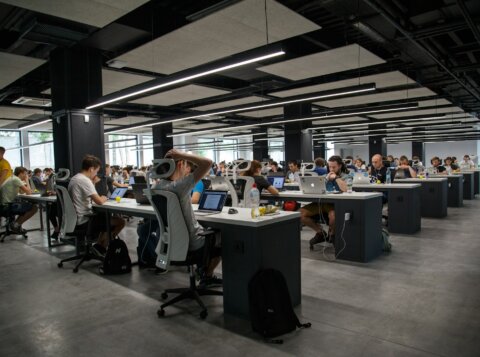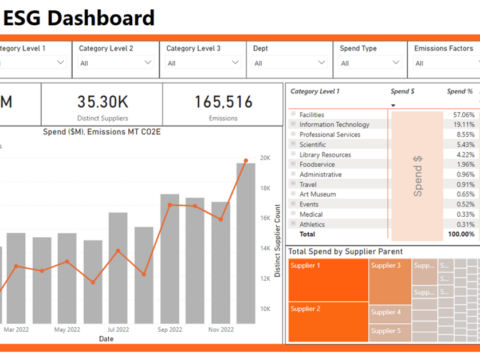Post-Pandemic Independent Contractors/Temp Labor: Things Your Organization Should Consider
As the impacts of the pandemic have gradually reduced this year due to vaccine rollouts and businesses pivoting to accommodate to the new normal, it would be natural to assume labor would have been easier to hire with the national unemployment rate exceeding 13%. Additionally, individuals across all levels of experience, temporary labor, contractors, or even full time workers should have been easy to hire. Conversely, this hypothesis has proven to be wrong.
We are going to highlight several factors that contributed to this unexpected outcome and the strategies that procurement leaders can do to respond. From finding labor to enhancing productivity, procurement can support the strategies to solve the current temp labor conundrum. The factors that contributed the most to this were continued and strong government unemployment benefits, employee COVID-19 health concerns or obligations, and an increased demand for talent.
More recently, as the effects of the pandemic have eased and unemployment has dropped to 6%, organizations are preparing for three driving forces establishing the needs of front-line labor:
- Growth of e-commerce and shift in consumer behavior:
- While there was a massive spike of e-commerce adoption in 2020, this has become a long-term trend, and consumers are preferring to shop online more and more. This has led to an increase in demand for hourly workers during a time of constrained labor supply.
- Resurgence of workforce demand from other competitive sectors:
- As more businesses across the country can return to some form of normalcy in their regular business operations, more employees are being hired or re-hired into competing sectors such as hospitality, entertainment, and food service roles creating even more demand for hourly talent.
- Even hourly wages rates of ~$15 have not been enough to entice people back to work. We expect those rates will continue to increase as the resurgence of workforce demand increases as the pandemic eases. Major fast-food chains such as McDonalds & Wendy’s have implemented a $100 to $500 signing bonus to go along with the increased wage rates.
- Stimulus checks being distributed via the 3rd round of Economic Impact Payments:
- In March, the third round of COVID relief checks were deployed by the federal government. This netted $1400/person to the majority of households that qualified and that would participate in the front-line labor ecosystem. For example, a family of five would have received a $7,000 stimulus check.
- Beyond the obvious positive impact to the end recipient, the effect on the front-line labor sector is a delay in workforce availability, as such payments allow front line employees the option to delay a return to work if they desired. With the assumption that stimulus benefits expire in September, there is an expectation that the workforce could return to normal, but normal is now different considering the demands in place today.
All these factors have left companies a limited smaller pool of resources – a challenge in a market that is red-hot with demand. As a result, the top priority of companies is to retain existing workers, understand the key cost drivers, such as hourly rates and utilization, and enabling the strategic procurement of contractors at the right locations in the right functions.
Strategies for procurement to innovate across the temporary labor and contractors market:
- Prioritize retaining current temporary labor or contractors:
- The average tenure for staffing employment was 10.1 weeks in 2020, a turnover rate of 415%, according to ASA research
- Most independent contractor employees are contracted for a set amount of time (e.g., 6-18 months), typically, after 60-90 days, the supplier recoups most of their costs which are mainly recruiting and other operational overhead. It would be to a company’s advantage to retain high performance independent contractors after the 90-day mark by offering them a full-time, equivalent position
- Work with Human Resources to implement training, growth, and development programs to show employees a career path and a reason to stay
- Set up reoccurring routine employee check-ins to institute regular touch points with workforce, while focusing on mental, physical, and emotional health
- Better management and control on labor costs drivers, hourly labor rates, and labor utilization:
- The largest drivers of temp labor costs are direct inputs such as the bill rate and markup rate; leadership needs to ensure markups are aligned to market competitive levels without affecting quality and service of employee
- Negotiate and manage stronger contract terms such as increasing payment terms and implementing a spend rebate with all suppliers
- Revamp overtime policy across all lines of business to ensure optimized utilization of contractors at regular hourly rates vs overtime rates
- Procurement of independent contractors from the right geographic locations and leveraging the prevalent remote workforce to your advantage:
- Conduct analyses based on geographic location of contractors dependent on base pay rates, state specific taxes, and fees
- Review supplier corporate locations to understand and compare overhead costs across regions
- Understand variable tax impacts driven by supplier and contractors by location across regions
- Better management and control on identifying roles that are critical to business operations:
- Given that the current market conditions have created a non-bias workforce marketplace, organizations need to recognize they might not be able to negotiate and achieve the best cost options
- Identify and prioritize roles and functions which are critical to your business
- Partner with key suppliers for each role function to maximize volume of business which will aid cost savings drivers
As mentioned earlier, the pandemic is easing, and business operations are going to return to pre-pandemic levels. Industries will continue to grow and the need for labor will expand. It is and will be critical for Procurement leadership to address the ever-growing challenges of the labor contractor market as we begin our post-pandemic new normal and the impact on frontline workers.












































































